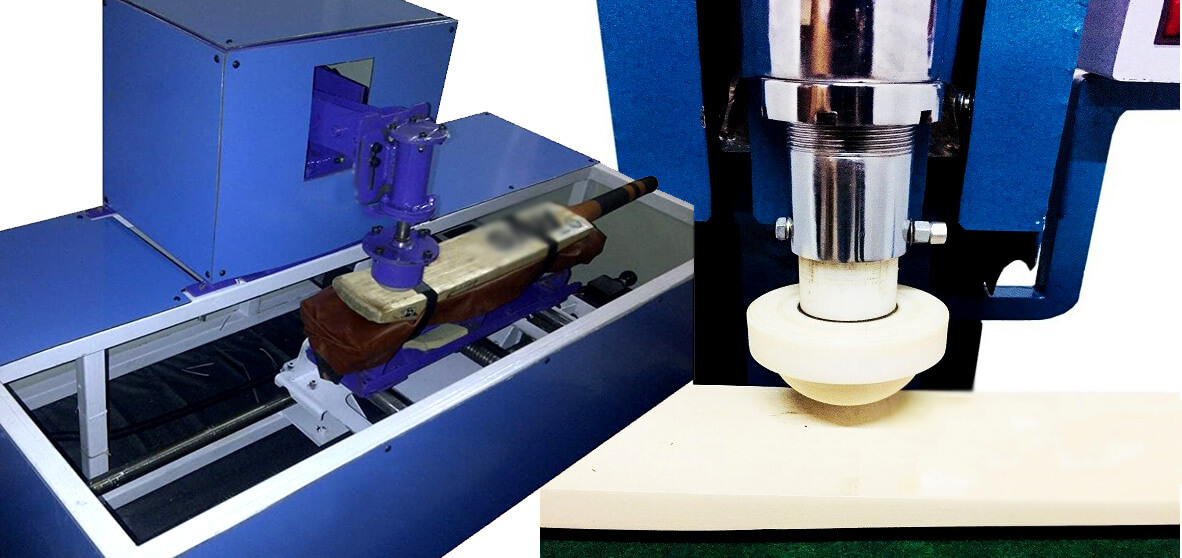
Cricket Bat Machine Knocking
Bought a new bat with a sticker that says “ready to play” and took it out the next day for a match? If yes, then that was the worst thing you could have done to your new bat. This is a rookie mistake; what you should have done is hone the bat by knocking it in.
Knocking can be done using a machine or manually through balls or a mallet.
Many bats come pre knocked too. When you think about this, a lot of questions must come to your mind, how to knock with the bat? What are the advantages or disadvantages? What tools are required for the process? How will I know my blade is ready to use? If you face these similar questions and answers are currently unavailable, then you are at the right place; this article will ensure that all of your doubts are resolved.
Here is a complete guide to knock in your new bat.
Advantages of Knocking
Cricket bat machine knocking can be done using a machine made for the same purpose or in the traditional way. It is essential to do knocking before using a bat in tournaments or any kind of matches because, during the manufacturing process, the bats are compressed to form a barrier to take hits from a leather ball, but this compress is not enough so to protect the bats and increase their longevity knocking is done.
Knocking strengthens this barrier made by compression, so the bat does not break on impact. The edges are to be rounded off by the process of knocking so they don’t go outside the grains of the bat.
Disadvantages of Knocking
Although there aren’t any significant disadvantages of knocking a cricket bat. If proper technique is not used to perform, then it can damage your bat. For example, many people hold their bats somewhere in the middle while using a mallet to knock the toe area of the bat; this destroys the handle of the bat. Vibrations travel through the toe to the handle and weaken the glue that is used to hold the handle together.
If edges are not rounded off then knocking was not done properly and that can't be achieved through cricket bat knocking machine or also called automatic knocking. To achieve this knocking should be done with a hammer/mallet in a circular motion.
Also, it is essential to not use a mallet to knock the part that is just below the sticker as it is the most delicate area, and knocking it does more harm than good. It is crucial to change the intensity of the mallet hits as you go from the toe towards the handle of the bat; hits at the bottom can be more challenging than the hits at the middle.
Also Read: How to select right cricket shoes for your game?
Is the machine knocking enough to go on the ground?
It is a myth that machine knocked bats are ready to play. You can use them to play, but they will crack open or break at the impact of a fastball.
Manual knocking is also called magical knocking because it is during this stage that the grains of the bat are compressed to strengthen the bat. The performance of the bat is reduced if not knocked properly. Without hand knocking, you will not get the full potential of machine knocking. Machine knocking will give you ok punch but that's useless if you are not doing a hand knocking to properly opening of the grains to maximum capacity and rounding the edges which are not possible in machine knocking.
Online sites making you fool by saying 5000 or 9000 knocks on every bat
As mentioned earlier, it is important to knock in your bat, but many online sites suggest that pre knocked bats are good enough to play, which is a myth. The pre-knocking-in can be beneficial to the knocking process, but certainly, it is not enough. These claims made by online sites are seldom accurate. A “9000 knocks” descriptive bat does not necessarily mean the bat is knocked in 9000 times, and there is no way for you to check these claims.
Every willow is different, and one standard can’t be used to perfect different kinds of willows. The number of times knocks are giving free on the bat is just a marketing gimmick. In some good English willow even 3000 hand knocks are enough and provide optimum punch and opened up the grains, so going for more than this will only damage the bat. It's not the number, it depends on how experienced or knowledgeable the knocking person is.
Also Read: Lightweight cricket bat or Heavyweight Cricket bats?
Hand Knocking
Which one to choose, Hammer or Ball Mallet?
It is considered an amateur mistake to use a ball mallet instead of a hammer mallet. Although both seem similar but knocking the bat with a ball mallet can lead to seam marks on the bat (these days good ball mallet-like from SM keep the seam away so not leaves any marks), and these are usually very light, so there is no real power behind the hits.
On the other hand, when using a hammer mallet, you don’t have to worry about the seam marks, and they come in different sizes. It is important to use a mallet that is heavy to ensure the hits are good. If a ball mallet or a real ball is being used to knock in the bat, it is important to make sure that the seam of the ball is not striking the blade and the bat is knocked in uniformly.
What Sachin and Dhoni used for knocking?
There are images of Sachin Tendulkar using a hammer mallet to knock in a bat and videos of MS Dhoni utilizing a ball and even an old bat to do the same. Old ball or mallet both are great tools to knock in your bat, but it is safe to assume that professionals use proper pieces of equipment to knock in their bats.
Why they don't go for the machine knocking, or enough money or equipment is unavailable to them? Sounds funny, but think once why they look more interested in hand knocking from what we saw. 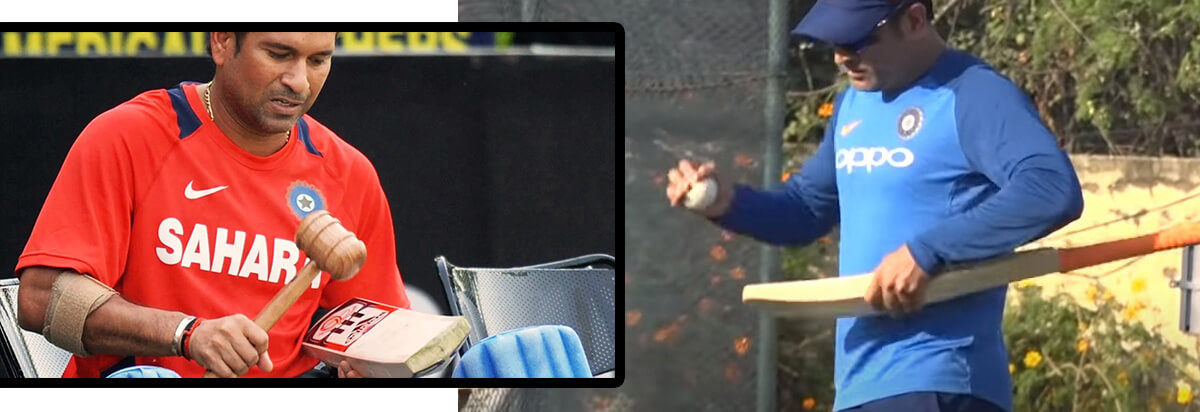
Which area of the bat to knock less?
It is important to knock the vertical middle of the bat or the part where the sticker goes with lesser intensity than the toe of the bat. The edges should be knocked in manually, some edges can little crack, so don't worry if you don't do it manually then the ball will do on the ground and that can be harsh. The back of the bat should not be knocked in. It is of no use to oil the splice of the bat or knock in the splice as in real match situations; this part is never used to strike the ball and hitting with a mallet will loosen the glue.
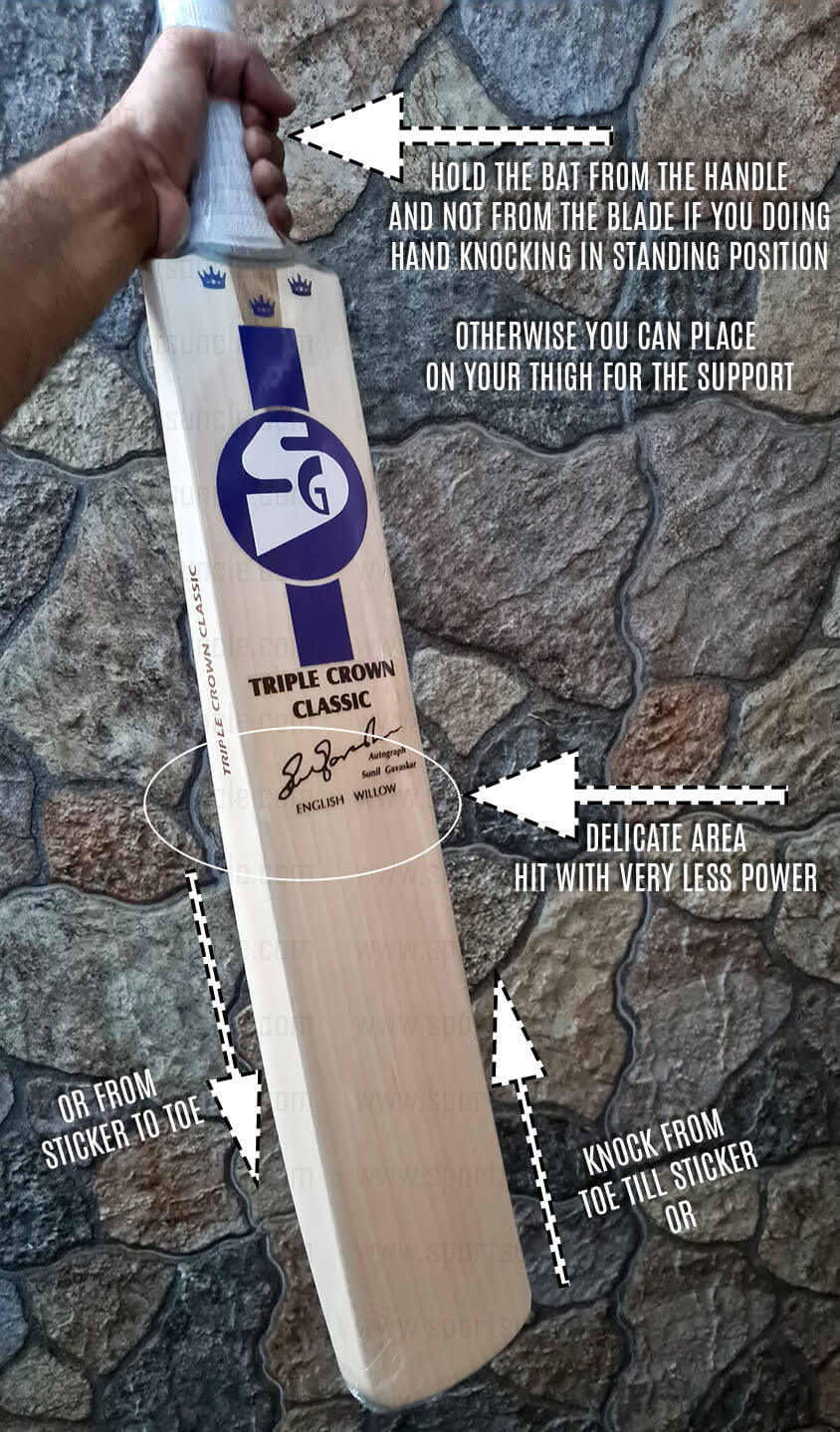
How do you know if a bat is knocked in?
The universally accepted time required for knocking in a bat is 6 hours, but nobody does it in one go. Also, the knocking process needs the bat to be oiled first and then dries off. So, it is a multi-day process. till you see your grains are very little opened up, the bat is not fully knocked. Even after knocking is completed, you should first take the bat to net sessions and check practically that the bat is ready to be used in matches.
What’s the right way of hand knocking?
Hand knocking or manual knocking should be done using a mallet. Proper techniques are to be used to knock in the bat for best results. The mallet should hit the bat in a circular motion; the power behind the hits should vary depending on the part of the bat being knocked. It is best to smart knock your bat uniformly, starting from the toe, knocking should be done in a straight horizontal line (from toe to middle or middle to toe), and the process should be carried in the same way as you move towards the sticker. Do not try to hit/knock the back of the bat.
Also Read: Maintenance of a cricket bat.
How to oil a cricket bat?
Oiling is very important to make your willow game ready. Before the knock-in process is started, the bat has to be oiled and then dried to remove any excess oil. Best way to oil your bat is to take 1 tablespoon of oil, dip a cloth in it and use that oil-soaked cloth to wipe the face of the bat.
This will ensure that the timber is oiled, and also you don’t have to worry about excess oil. Be sure not to oil the stickers and the scruff protector; the scuff protector wears out in about a year, then you can oil that area too.
Before oiling, use very fine sandpaper to clean the surface but do not overdo it. The splice and handle of the bat are not to be oiled; it weakens the glue holding it together. After the oiling process is completed, keep the bat horizontally with the face of the bat parallel to the ceiling.
The next morning, use sandpaper to clean the surface of the bat and reapply a very thin layer of oil as mentioned above. Leave the bat for another 24 hours in the same manner, horizontally with the face of the bat parallel to the ceiling. This process can be repeated a maximum of 3 times, but 2 times should be enough. Now the bat is ready for knocking, if any unabsorbed oil is there then remove it from the fine sandpaper.
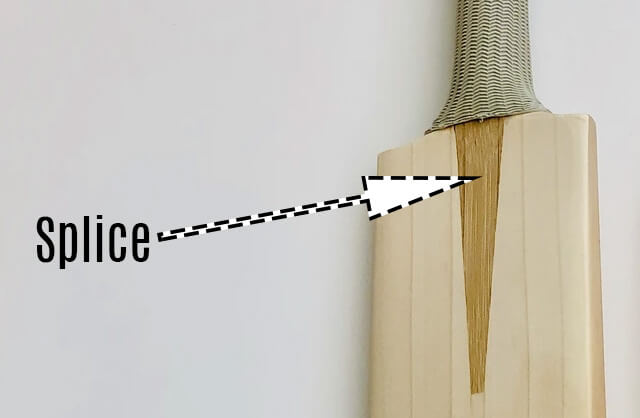
Oiling is necessary for a new bat?
Oiling a new bat is necessary to maintain the moisture level inside the willow. If the moisture level is not correct, it will result in cracking or even a clean break. It is advised to oil your bat or check whether the moisture level is right every 3-4 weeks. If knocking is done without oiling the bat, it will shorten the life of the blade.
Linseed oil will provide moisture to the fibers inside the bat so, it will be easy to compress and form a barrier, as mentioned earlier when the bat is being knocked in.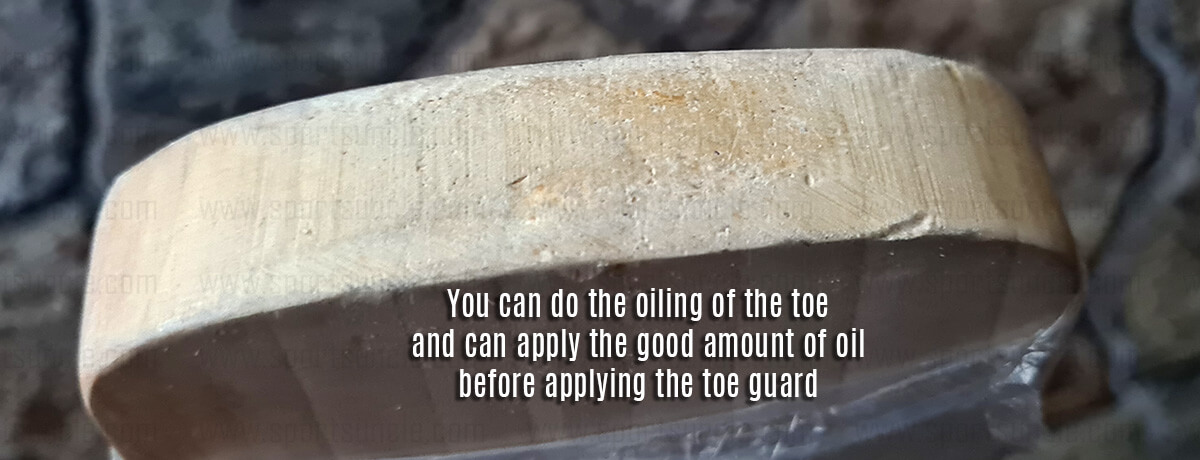
Which oil to use and how much?
It is best to use raw linseed oil on your blade. This oil is available to purchase on every major e-commerce site. As mentioned earlier, use 1 tablespoon of oil and a piece of cloth to oil your bat. Be sure not to put too much oil or too little oil on your blade, as in both cases, the life of the bat will be depreciated, willow turns darken.
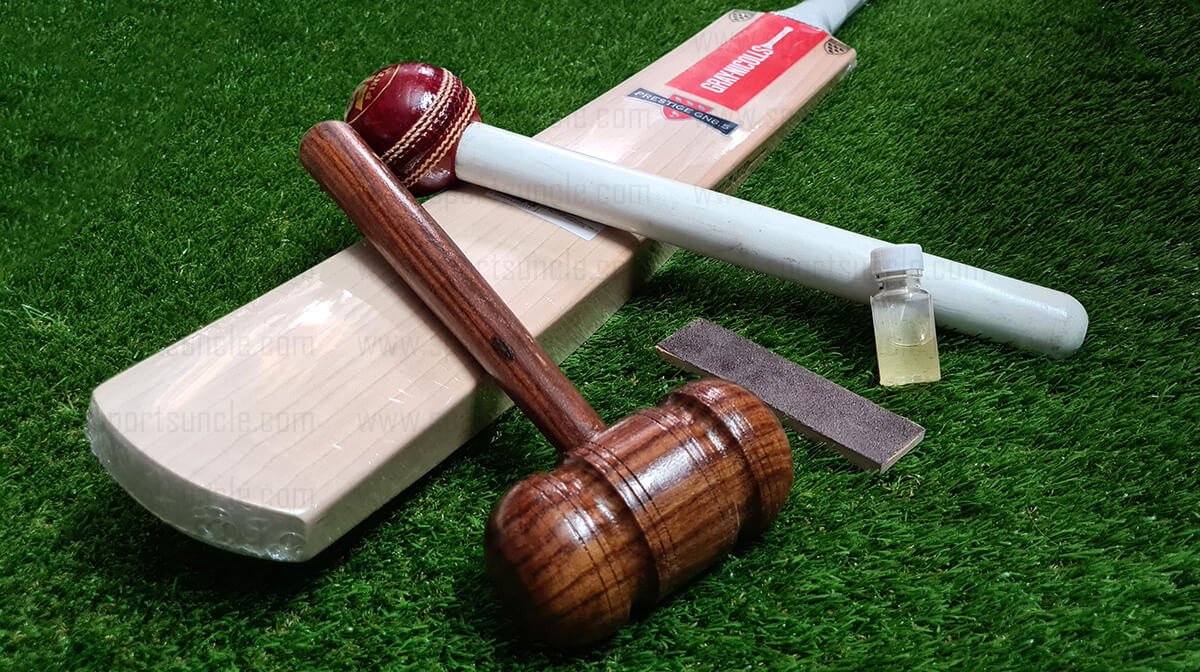
We hope that all of your doubts and questions about how to knock in your new bat are resolved. The task of doing it on your own might be tedious, but it is always helpful to know and understand the nuances of your sport if you want to be successful. If you still have a question that is still unanswered and not able to find answers then post the question below and we will try to answer your question.
Also Read: 6 tips to choose a cricket bat that is right for you.
Your email address cannot be published. Required fields are marked*

 My Account
My Account Track Order
Track Order Sports Guide
Sports Guide
